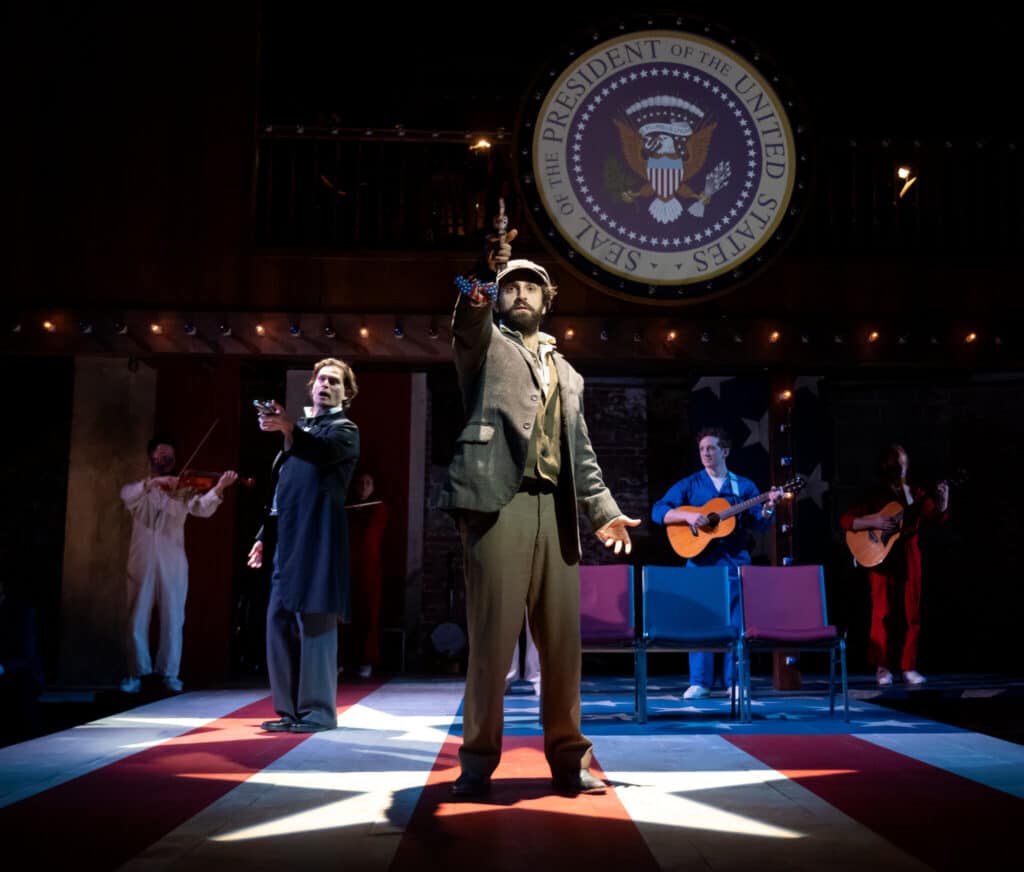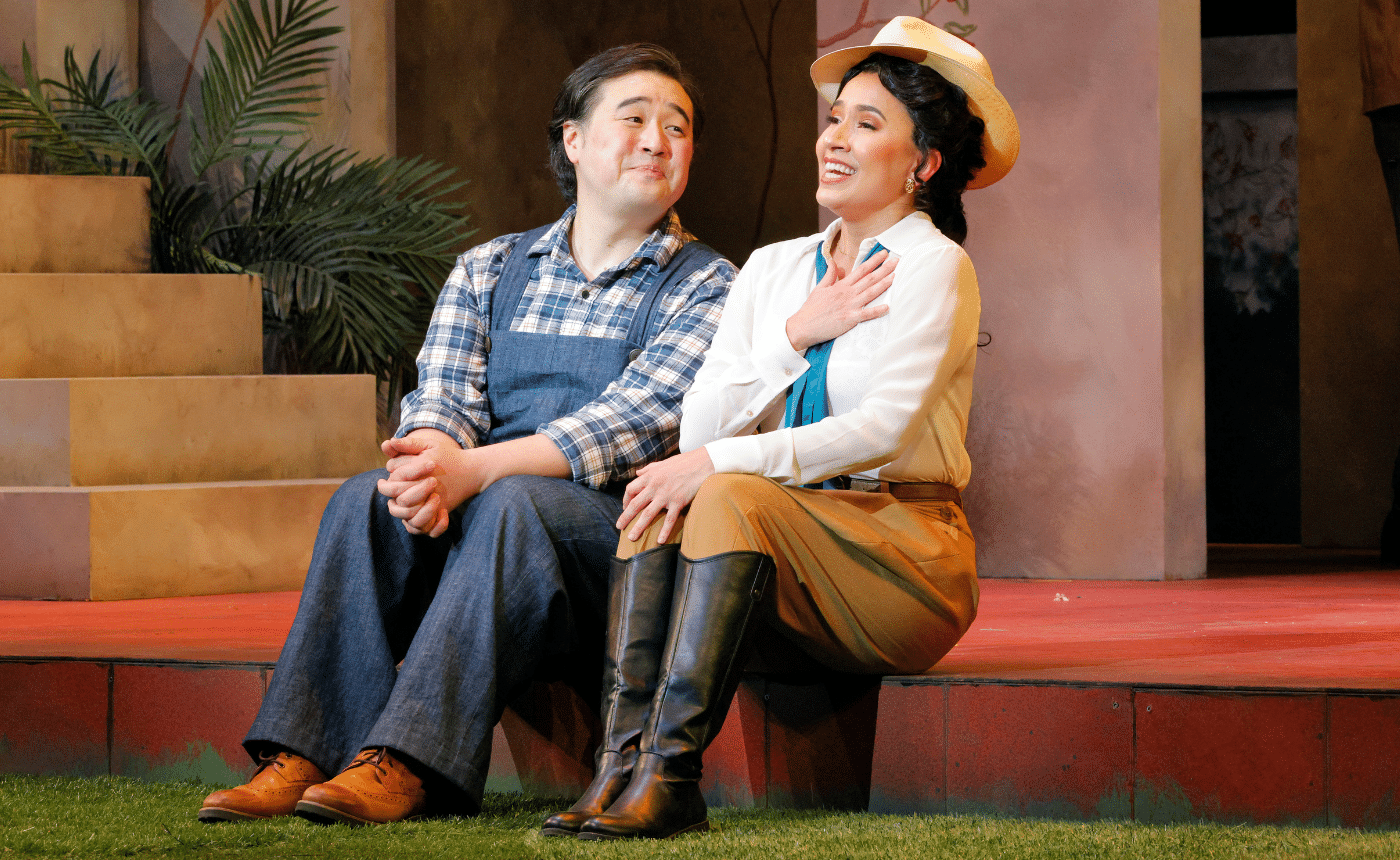Sweeney ToddStephen Sondheim bio
As a composer of iconic musical numbers, creator of legendary theater works, and mentor to several young composers, the influence Sondheim has had on American musical theater cannot be overstated. Sondheim was widely praised, with numerous awards to his name, including 8 Tonys, 8 Grammys and one Oscar. In 2010, on the occasion of his 80th birthday, Arthur Miller’s Theater on West 43rd Street was renamed the Sondheim Theater, much to the composer’s chagrin. President Barack Obama awarded him the Presidential Medal of Freedom, the highest award available to a non-military citizen in 2015. Broadway’s most meaningful tributed came on December 8, 2021, when, just under two weeks after his death from cardiac arrest, the lights of the Great White Way were dimmed for one minute.
Born in 1930 to Etta and Herbert Sondheim, who manufactured dresses designed by Etta, Sondheim grew up on the Upper West Side of Manhattan, an “isolated, emotionally neglected” child, according to his biographer Meryle Secrest. After his parents divorced, he also spent time on a farm in rural Pennsylvania. Sondheim’s relationship with his mother was deeply hostile, to the point that he refused to attend her funeral in 1992, after two full decades of estrangement. His earliest education was at the Ethical Culture Fieldston School, which counts J. Robert Oppenheimer, conductor Alan Gilbert, and journalist Barbara Walters as just a few of the notable alumni of this preparatory academy. In 1940, his mother sent him to the equally prestigious New York Military Academy, and he concluded his prep school years at the George School, a Quaker school in Buck County, Pennsylvania. Sondheim matriculated at Willams College in 1946, graduating magna cum laude in 1950 with a two-year fellowship for further music studies.
An excursion to the theater at age nine to see a performance of Very Warm for May proved the seed for Sondheim’s interest in theater. He recalled “The curtain went up and revealed a piano. A butler took a duster and brushed it up, tinkling the keys. I thought that was thrilling.” Around age ten, young Stephen formed a friendship with James Hammerstein, a Bucks County neighbor and son of Oscar Hammerstein II, the legendary lyricist. Oscar became a paternal stand-in and one of the most influential figures in Sondheim’s growth. Stephen had written a musical at the George School titled By George, a source of praise from his peers. When he asked Hammerstein to evaluate it, Oscar responded by telling him it was terrible, but followed up his negative assessment with a deeply detailed analysis of its flaws. Sondheim said he learned more about songwriting and theater that afternoon than ‘most people learn in a lifetime.” Hammerstein continued to work with Sondheim, designing a sort of course in theater-writing.
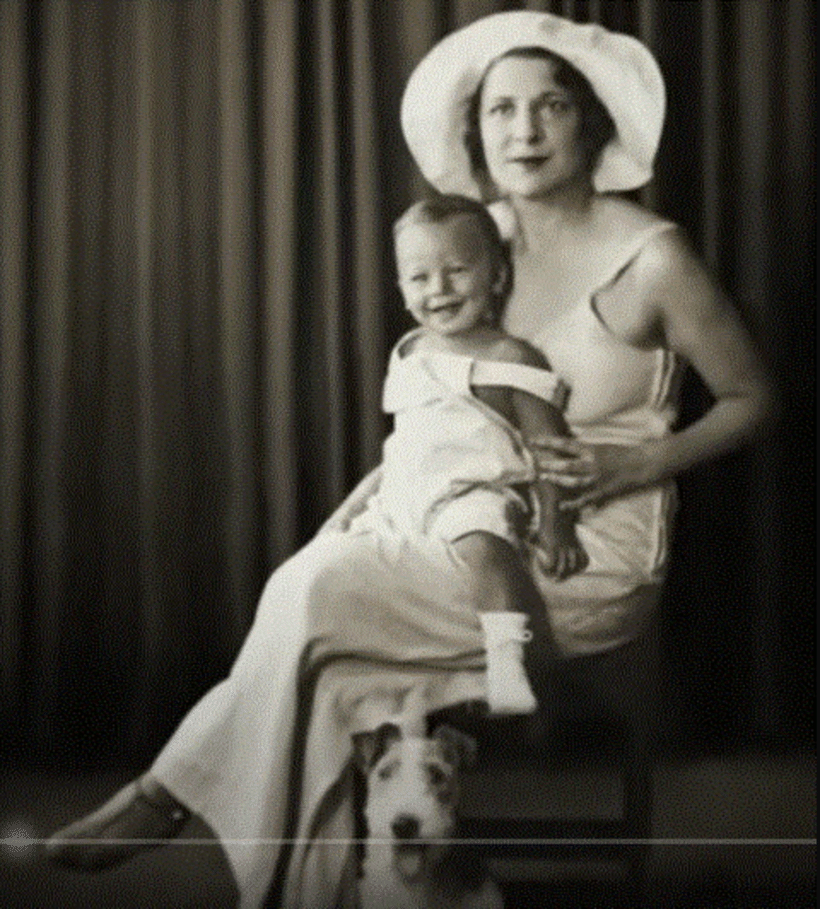
Sondheim’s other early mentor was the composer Milton Babbitt, with whom he studied during the Williams years. His Williams professor Robert Barrow directed him to Babbitt, whom he called a “frustrated theater composer.” Babbitt was a mathematician and composer whose classical output was fairly esoteric. During their weekly four-hour tutoring sessions in New York City, Sondheim and Babbitt analyzed a wide range of music, from Jerome Kern and Rodgers and Hart to Mozart and the other classical greats. Just as Hammerstein guided young Sondheim to understand why his schoolboy musical was flawed, Babbitt helped Sondheim understand why the music of these composers and songwriters was successful.
Sondheim’s first years post-college were lean ones-he worked at his craft while honing his encyclopedic knowledge of cinema. His knowledge of film trivia led him to success at the contestant tryouts for The $64000 Question. In 1954 Sondheim attended a party, a night that would forever change his life. While socializing with writer Arthur Laurents, he learned of Laurents’ current project, a musical version of Romeo and Juliet that he was creating with the composer Leonard Bernstein. Adolf Comden and Betty Green were originally set to pen the lyrics, but they were engaged in Hollywood, and the project once again needed a lyricist. Sondheim hesitated, feeling that this project would divert him from his composing, but Hammerstein wisely advised him to take the job.
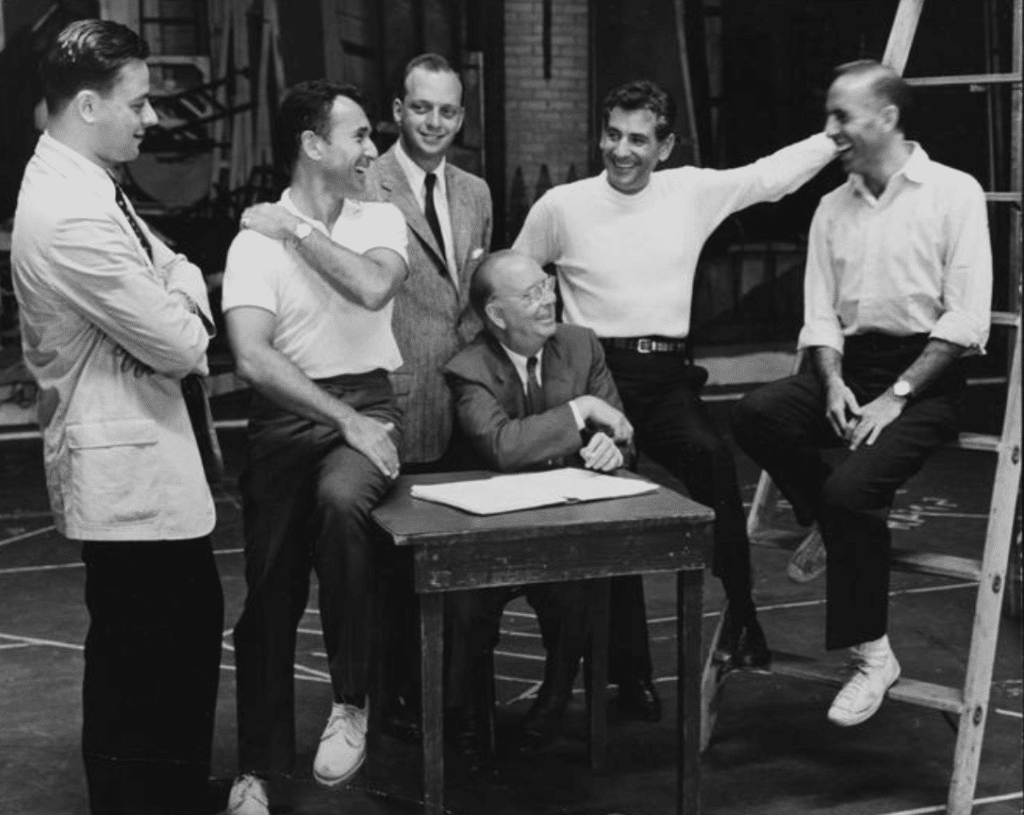
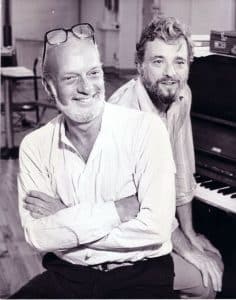
Laurents and Jerome Robbins approached Sondheim to collaborate on their next project, a musical based on the memoirs of Gypsy Rose Lee. Sondheim originally wanted to write both music and lyrics, but the star, Ethel Merman, insisted that Jule Styne, an experienced theater professional be engaged to write the music.
The first professional musical for which Sondheim wrote both lyrics and music was the wildly successful 1962 comedy A Funny Thing Happened on the Way to the Forum, which ran for 964 performances and won six Tony Awards, including Best Musical. His follow-up, 1964’s Anyone Can Whistle, bombed, but did have the honor of introducing Angela Lansbury to the musical stage. The next most significant professional relationship in Sondheim’s career was his collaboration with producer Hal Prince, with whom he created some of the seminal works of the Broadway stage. Prince/Sondheim projects included Company (1970), Follies (1971), A Little Night Music (1973), Pacific Overtures (1976) and Sweeney Todd: The Demon Barber of Fleet Street (1979).
After the failure of 1981’s Merrily We Roll Along, Sondheim questioned his further place on Broadway and considered alternative directions such as film writing, video game design, and mystery writing. A chance viewing of James Lapine’s off-Broadway piece Twelve Dreams inspired his next great collaboration. With a visual aesthetic that Sondheim found inspiring, James Lapine was a perfect partner for the next stage of Sondheim’s compositional career. Together they created Sunday in the Park with George (1984), Into the Woods (1987), and Passion (1994).
The last two decades of Sondheim’s life continued in this vein, though at this point his legacy was well established. In addition to further original Broadway works, Sondheim wrote new songs for Hollywood adaptations and collaborated on revues and retrospectives of his works. At the time of his passing, he had been working on a musical based on films of the surrealist director Luis Buňuel. Here We Are premiered off-Broadway in 2023, with a second act recreated from sketches and drafts of the project.
Sondheim’s later life always included mentoring young composers, as he was deeply committed to passing on the generosity he was shown in his early years. He met with 14-year-old Adam Guettel (The Light in the Piazza), grandson of Richard Rodgers, to offer criticism on his youthful work. He believed Jonathan Larson (Rent) was finding success in mixing pop styles with Broadway sensibilities. Sondheim worked with Lin-Manuel Miranda on a remounting of West Side Story, asking Miranda to translate certain lyrics into Spanish. Miranda shared his new project with him, a musical called Hamilton, which Sondheim reviewed and gave notes on.
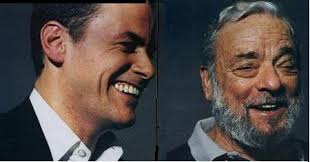
Sondheim’s musical style can be spikey, occasionally dipping a toe into Babbitt’s atonality, yet the moments of heartfelt melodic invention are numerous. Many of his most famous tunes, such as “Being Alive” or “No One is Alone” are based on short repeated melodic motives that build into a more rhapsodic bridge. His choice of subject matter was never conservative, as evidenced by the darkness of Sweeney Todd (abuse, assault, and cannibalism), Assassins (based on historical figures who attempt Presidential assassinations with varying levels of success) or The Frogs, based on an ancient Aristophanes play. Into the Woods may be about fairy tales, but the tales are fractured and dark. The audience remained always at the forefront of Sondheim’s process. In a conversation with Fresh Air’s Terry Gross, Sondheim stated, “I’m interested in the theater because I’m interested in communication with audiences. Otherwise I would be in concert music.” Broadway and theater audiences remain forever grateful for his commitment to their experience.
